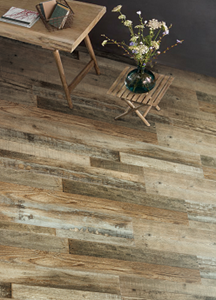Since wood floors make up the biggest visible areas in your house, they have a significant effect on its feel and look. Picking types and designs of wood that match your design and way of life choices will ensure a unified relationship with your plank floors and a lifetime of pleasure. Strong wood floors can be sanded and refinished often times; they will last longer than you will, so bear in mind that the floors you select today will likely be improving your home for generations to come.

What to know before buying vinyl plank flooring
Plank Flooring Widths and Lengths
The term large plank flooring describes strong, typically incomplete, wood flooring greater than 3 inches in width. Most broad plank flooring is in between 3″ and 20″ in width and is offered in random widths. In the old days, people used the whole log or resource that was available to them, so floors in old houses have slabs of numerous different widths, referred to as random widths. Single width floors, a more recent development, are also available, although there is typically an additional charge for single width orders or duplicating pattern orders as this needs the producer to do more sorting of the item.
Setting up a random width floor disappears hard than setting up all one width or a duplicating pattern. The floor will include 3 or more widths in differing quantities. You will get a tally sheet with your order informing just how much linear and square video you have in each width of your order. The widths that have the most linear video will duplicate more frequently than those with less linear video. The tally sheet informs you the number of times each width need to duplicate across an offered length of a room.
Wide plank flooring lengths differ considerably by the maker. Greater end large plank flooring is available in longer lengths, typically 8 to 16 feet long, and is sawn complete length directly off the log. Longer slabs imply that there will be less end and edge joints, or transitions, on your floor, developing a clean visual line. Because longer slabs prevailed in early America, standard and antique house owners typically choose long slabs for their historical appeal. Lower end large plank flooring, made by cutting around problems in milled boards, is available in lengths as short as one foot. The abundance of much shorter boards develops a hectic or patchwork impact.
Where Will the Floor Enter Your Home?
Where you plan to place the floor in your house may make all the distinction in your wood choice. Depending upon your tolerance, a more difficult wood may be a much better option for a high-traffic area, while a lower-traffic area such as a bedroom may be the very best place for a softer wood. Positioning rug over your wood floor in high-traffic areas will also help in reducing wear. Naturally, large plank flooring can always be refinished to remove scuff marks, if wanted. The beauty of strong wood floors is that they can be sanded and refinished often times and still have a lifetime of wear left in them.

